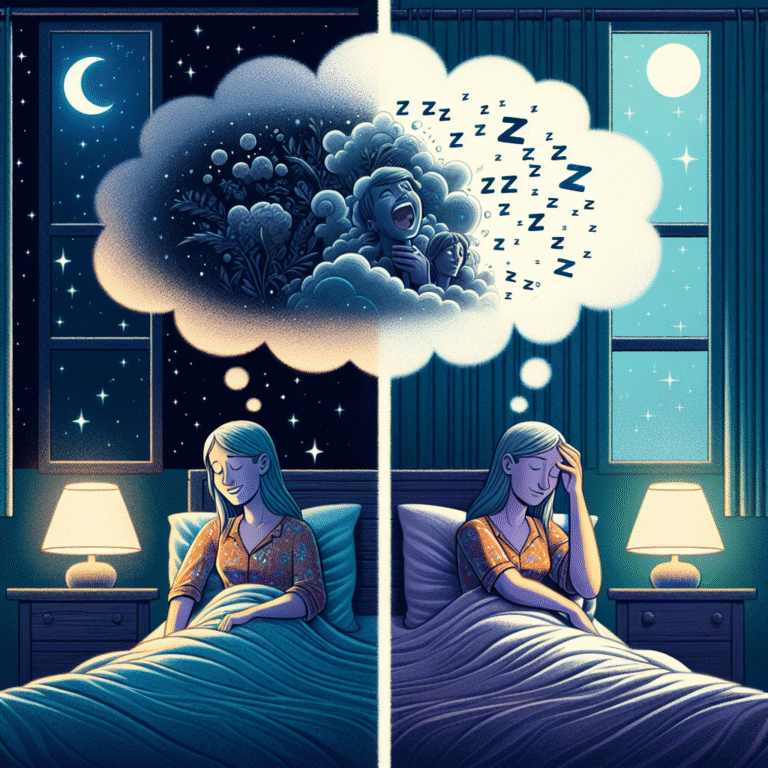
Rest Easy: Proven Sleep Hygiene Techniques for a Night of Quality Sleep
Introduction
In today’s fast-paced world, the simple act of sleeping has become an elusive goal for many. With stressful work schedules, relentless technology, and significant lifestyle changes, fewer people are achieving the restful nights they crave. Quality sleep is vital for both mental and physical well-being; it impacts everything from mood to cognitive function. In this article, we delve into Rest Easy: Proven Sleep Hygiene Techniques for a Night of Quality Sleep, to equip you with actionable strategies for transformation.
Understanding Sleep Hygiene
Before diving into specific techniques, it’s essential to grasp what sleep hygiene entails. Sleep hygiene encompasses various practices and habits that promote quality sleep on a regular basis. It’s about creating an environment that fosters sleep, both mentally and physically. Common issues like insomnia or sleep anxiety can often be alleviated with the right sleep hygiene techniques.
The Science of Sleep
According to the National Sleep Foundation, adults typically need between 7-9 hours of sleep per night. During sleep, your body undergoes critical processes: your brain consolidates memories, muscle repair occurs, and hormones like cortisol and insulin are balanced. Establishing Rest Easy: Proven Sleep Hygiene Techniques for a Night of Quality Sleep can significantly enhance these processes.
Proven Sleep Hygiene Techniques
Here is your comprehensive guide to Rest Easy: Proven Sleep Hygiene Techniques for a Night of Quality Sleep.
1. Create a Sleep-Inducing Environment
Light and Darkness
Your bedroom should be a sanctuary for sleep, shielded from distracting lights. Using blackout curtains or an eye mask can significantly improve sleep quality by encouraging melatonin production, the hormone responsible for sleepiness.
Temperature Control
The ideal sleep environment is cool, typically between 60-67°F (15-19°C). A cooler room can help lower your body temperature, making it easier to fall asleep.
Noise Reduction
Consider using white noise machines or earplugs to block out disturbances. Studies indicate that noise can fragment sleep, so creating a quiet space is imperative.
2. Establish a Sleep Routine
Consistent Sleep Schedule
Going to bed and waking up at the same time every day can help regulate your body’s internal clock. Try to maintain this routine even on weekends.
Wind Down
Incorporating a winding-down period can signal your body that it’s time for sleep. Techniques like reading, meditating, or gentle stretching can calm the mind.
3. Mindful Technology Use
Screen Time Limitation
The blue light emitted from devices can hinder melatonin production. Aim to stop using screens at least an hour before bedtime. If necessary, try blue-light blocking glasses or apps.
Digital Detox
Consider a full digital detox an hour before bed. Reflect on your day, plan for tomorrow, or engage in creative outlets instead.
4. Nutrition and Sleep
Caffeine and Nicotine
Be mindful of your intake of caffeine and nicotine, as both are stimulants that can disrupt sleep. Aim to avoid these substances at least six hours before bed.
Evening Snacks
Eating heavy meals too close to bedtime can cause discomfort. Opt for a light snack like yogurt or a banana, which can promote sleep due to their magnesium content.
5. Physical Activity
Engaging in regular physical activity can enhance sleep quality. However, timing matters—exercising too close to bedtime may have the opposite effect. Aim for daytime workouts to reap the benefits.
Case Studies in Sleep Hygiene
Case Study 1: The Sleep Revolution
In a 2017 study published in the journal Nature and Science of Sleep, researchers analyzed the sleep patterns of a group implementing sleep hygiene practices. Results showed that creating a consistent bedtime routine and managing light exposure improved sleep quality in 80% of participants. This aligns perfectly with our techniques in Rest Easy: Proven Sleep Hygiene Techniques for a Night of Quality Sleep.
Analysis: This study underscores the importance of a structured bedtime routine, validating our emphasis on consistent sleep habits.
Case Study 2: A Tech-Free Transformation
A small tech company implemented a ‘tech-free hour’ before bed policy for its employees. Following the introduction of this initiative, staff reported a significant reduction in insomnia symptoms and overall sleep quality increased by 30%.
Analysis: This case illustrates the effectiveness of reducing screen time. It aligns seamlessly with our recommendation of mindful technology use in achieving quality sleep.
Case Study 3: Nutritional Interventions
Participants in a 2019 study at a major university changed their evening meal patterns by eliminating sugar and heavy carbs. They noted an improvement in sleep times by 1.5 hours on average.
Analysis: This case reinforces the idea that nutrition plays a crucial role in sleep hygiene, highlighting the importance of dietary choices.
Table: Summary of Proven Sleep Hygiene Techniques
| Technique | Description | Expected Outcome |
|---|---|---|
| Create a Sleep-Inducing Environment | Use dark curtains, maintain cool temps, limit noise | Enhanced sleep quality, faster asleep |
| Establish a Sleep Routine | Consistent bedtime/wake time, wind down | Regulated internal clock, improved mood |
| Mindful Technology Use | Limit blue light exposure before bed | Improved sleep onset and quality |
| Nutrition and Sleep | Avoid caffeine, heavy meals before bed | Less disrupted sleep, overall health |
| Physical Activity | Regular exercise, timed correctly | Enhanced sleep duration and quality |
Conclusion
Achieving quality sleep isn’t just a dream; it’s a realistic goal when you embrace the right practices. With Rest Easy: Proven Sleep Hygiene Techniques for a Night of Quality Sleep, you possess the tools to turn your nightly routine into an oasis of tranquility, free from the distractions of modern life. Start small by integrating one or two techniques, and gradually build up to a full routine.
Remember, sound sleep is fundamental to living a fulfilling life. You wake up refreshed and energized, ready to tackle the challenges of the day. Your journey to revitalizing sleep begins now—take the first step!
FAQs
1. What is sleep hygiene?
Sleep hygiene refers to a series of practices and habits that promote quality sleep, including maintaining a regular sleep schedule, creating a restful sleep environment, and being mindful of food and technology use.
2. How can I create a conducive environment for sleep?
Use blackout curtains, keep the room cool, and limit noise using earplugs or white noise machines to create a tranquil sleeping space.
3. Why is a consistent sleep schedule important?
A consistent sleep schedule helps regulate your body’s internal clock, promoting better sleep patterns and improving the overall quality of sleep.
4. Can diet affect my sleep?
Yes, what you eat can significantly impact your sleep quality. Heavy or sugary foods can disrupt sleep, while light, healthy snacks may promote better sleep.
5. How do I know if I have a sleep disorder?
Common symptoms of sleep disorders include difficulty falling asleep, frequent waking, excessive daytime sleepiness, and difficulty concentrating. If you suspect a sleep disorder, consult a healthcare professional for evaluation.
Incorporate these ideas into your life, and you’ll be well on your way to achieving a restful night’s sleep. Remember, the path to quality sleep is within your reach—so rest easy!
















